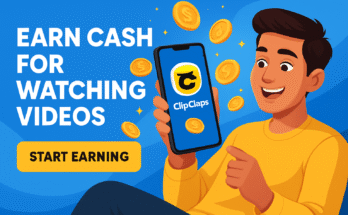Intro:

Now, let’s delve into BuzzBreak in more detail and from a technical perspective. BuzzBreak allows users to make money in mainly just one way, by using the app to engage them with digital content, like news articles and short videos, to earn money through a rewards program and additional in-app “coins.” Through the app, you can use a digital payment program to convert your coins to actual money. The app is designed to be intuitive, allowing a range of Android devices to utilize and essentially gamifies the consumption of highly habitual media.
App onboarding and user experience
BuzzBreak’s onboarding process simplifies the onboarding experience. Users log in with Google or Facebook: A Technical Perspective on Micro-Earning by Consuming Digital Contentacebook APIs through OAuth, which both simplifies the signup and minimizes abandonment rates. The application circumvents normal KYC (Know Your Customer) procedures. This makes it a more of an easier use case, although it may raise compliance issues in some regulatory environments. But regardless, this method continues to make it easier for the technology novice as well as casual users.
Engagement with content and getting rewarded

BuzzBreak’s reward engine focuses on users’ activity:
1. News Articles:
You receive a small amount of coins for each article you read. The site’s news site generates somewhat suggested news articles based on your profile details, which attempts to get more people to engage, and thereby have more opportunity to see ads, and make money.
2. Videos:
Short-form video playback limits users, and you can only receive rewards once a day. The use of technical logic within the app, likely timers and session records for users, happens in the app, to provide users with fair rewards, also to see an ad for the content.
3. Daily Check-Ins:
The daily login bonus, which gets bigger the more you do, is a classic tactic to make games more fun. But it improves not only DAU (Daily Active Users) numbers but also actively discourages users from leaving.
4. Referral System:
Unique codes for referrals allow you to track network effects. The system rewards both the person making the invitation and the person who accepts the invitation, and it regularly updates the backend ledger to make sure people cannot cheat by having more than one account. Integration with Offerwall
BuzzBreak works in conjunction with third-party offer providers such as Tapjoy and IronSource to provide users with more opportunities to earn money. Technically speaking, BuzzBreak behaves as an aggregator, forwarding user data (anonymized) to our partners that return completion and payment instructions through API callbacks. Thus, by relying on modular integration, BuzzBreak can add more ways to earn money without handling the offers directly.
Micro-Payments and the Withdrawal Process
![]()
I am pleased that $0.20 is the minimum payout threshold, but the micro-payment strategy is key to building trust and encouraging members to change their behavior and utilize your service in new markets where many people may be cynical about online earning schemes. BuzzBreak’s backend makes it simple to withdraw using PayPal, but all users in Pakistan can only withdraw using Payoneer or use digital exchangers to turn their earnings into JazzCash or Easypaisa. I am not a huge fan of navigating this multi-hop process; it adds variability and possible points of failure, but it is a solution that makes sense in a fragmented fintech world.
Security Considerations

A minimal onboarding experience is certainly easier for users, but it can put the security of an account and a user’s vulnerability to fraud at risk. BuzzBreak will need strong anti-bot and fraud detection, likely by implementing device fingerprinting or behavioral analytics, and may, depending on their platform, be able to do a manual review of suspected nefarious bots that have had accounts suspended/flagged. Offerwalls are especially vulnerable to fraud, so the technical stack of the platform needs to have an emphasis on blacklisting and real-time responses to possible fraudulent activity.
Market Positioning & User Segmentation

From a market analysis perspective, BuzzBreak positions itself towards the “time-rich, cash-poor” segment of the market, namely students, homemakers, and entry-level digital earners. The app has a lightweight build that can work with low-spec hardware, a must in South Asia where legacy devices are commonplace.
Limitations and Scalability
The biggest limitation is earning velocity; with the limited amount of significant referrals or high-value offers, users earn coins at a slow pace – this is purposely designed for a balance between user retention and sustainable ad revenue. There is limited offerwall inventory geographically; South Asian users have fewer, lower-valued opportunities because of advertisers’ targeting and purchasing power locally. Payment limitations, especially by being reliant on PayPal, show that further fintech integrations will be needed as the app scales.
Conclusion: Technical Evaluation

BuzzBreak is not a get-rich-quick scheme— it’s a micro-task platform that is disguised as a content aggregator. With all that being said, it is essentially a legitimate, low-friction model for users who want to capitalize on their digital downtime. The application architecture is designed around convenience, a low operational footprint, and (in theory) fast payout. The primary technical challenge is creating a high-offer inventory of value options (Dr. I don’t know what the tooling looks like for them), and figuring out more ways to pay (regionally) that are local and pay directly.



